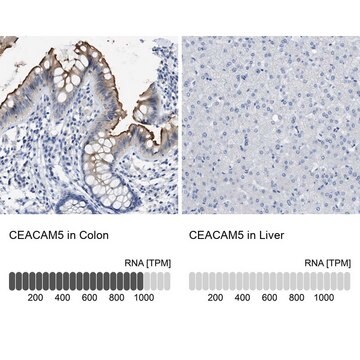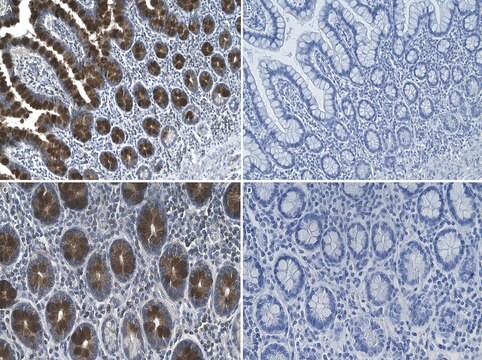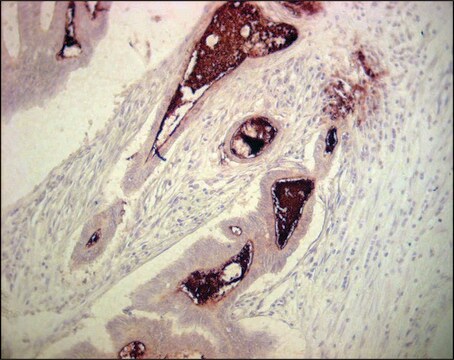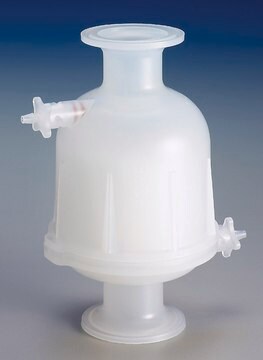MABT65
Anti-CEACAM1 Antibody, clone 4D1/C2
clone 4D1/C2, from mouse
Synonim(y):
Carcinoembryonic antigen-related cell adhesion molecule 1, Biliary glycoprotein 1, BGP-1, CD66a
About This Item
Polecane produkty
pochodzenie biologiczne
mouse
Poziom jakości
forma przeciwciała
purified antibody
rodzaj przeciwciała
primary antibodies
klon
4D1/C2, monoclonal
reaktywność gatunkowa
human
metody
ELISA: suitable
flow cytometry: suitable
immunohistochemistry: suitable
western blot: suitable
izotyp
IgG1κ
numer dostępu NCBI
numer dostępu UniProt
Warunki transportu
wet ice
docelowa modyfikacja potranslacyjna
unmodified
informacje o genach
human ... CEACAM1(634)
Powiązane kategorie
Opis ogólny
Immunogen
Zastosowanie
Western Blot Analysis: A representative lot was used by an independent laboratory to detect CEACAM1 in human granulocyte lysate (Bogoevska, V. et al., (2006). Glycobiology. 16(3): 197–209).
Flow Cytometry Analysis: A representative lot was used by an independent laboratory to detect CEACAM1 in human granulocytes by FACS analysis (Bogoevska, V. et al., (2006). Glycobiology. 16(3): 197–209).
Cell Structure
Adhesion (CAMs)
Jakość
Western Blot Analysis: 0.5 µg/mL of this antibody detected CEACAM1 in 10 µg of HepG2 cell lysate.
Opis wartości docelowych
Bands are usually observed at ~120-160 kDa, resulting from different glycosylations (Lauke, H., et al. (2004). Mol. Hum. Reprod. 10(4):247-252).
Postać fizyczna
Przechowywanie i stabilność
Komentarz do analizy
HepG2 cell lysate
Inne uwagi
Oświadczenie o zrzeczeniu się odpowiedzialności
Nie możesz znaleźć właściwego produktu?
Wypróbuj nasz Narzędzie selektora produktów.
Kod klasy składowania
12 - Non Combustible Liquids
Klasa zagrożenia wodnego (WGK)
WGK 1
Temperatura zapłonu (°F)
Not applicable
Temperatura zapłonu (°C)
Not applicable
Certyfikaty analizy (CoA)
Poszukaj Certyfikaty analizy (CoA), wpisując numer partii/serii produktów. Numery serii i partii można znaleźć na etykiecie produktu po słowach „seria” lub „partia”.
Masz już ten produkt?
Dokumenty związane z niedawno zakupionymi produktami zostały zamieszczone w Bibliotece dokumentów.
Nasz zespół naukowców ma doświadczenie we wszystkich obszarach badań, w tym w naukach przyrodniczych, materiałoznawstwie, syntezie chemicznej, chromatografii, analityce i wielu innych dziedzinach.
Skontaktuj się z zespołem ds. pomocy technicznej








